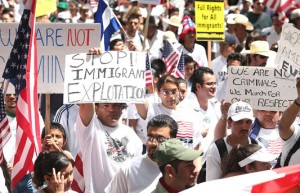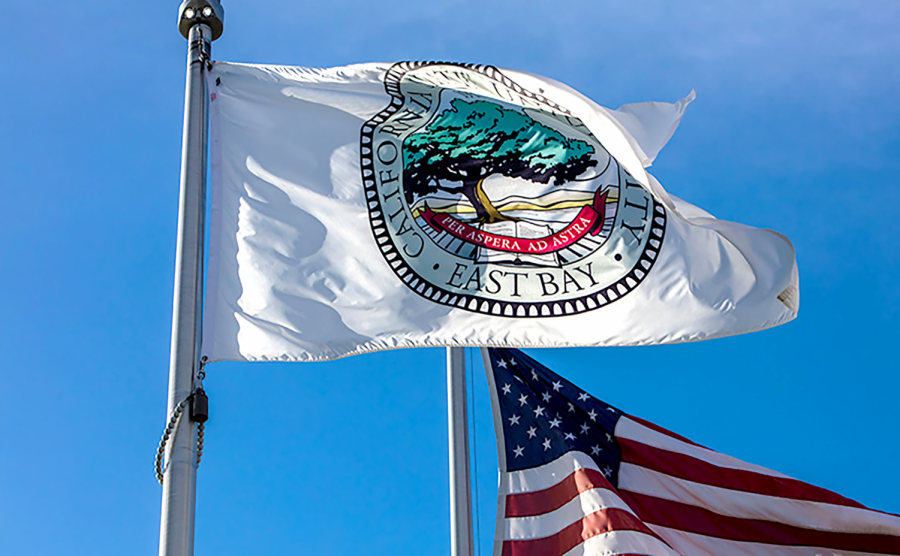
As the fastest growing ethnic population in the United States, it’s no wonder that both Democrats and Republicans are starting early to secure the 22-million Latino votes up for grabs for the 2012 elections.
Though the Latino population has traditionally been a Democratic constituency, Republicans seem to be making gains in the sweepstakes for the Latino vote as more elected Latino Republicans have made the jump from city council, legislative and congressional seats to the party’s highest elected offices.
Rightfully so, with a 50.5 million Latino population in the U.S., according to the 2010 Census, and an increase in eligible voters from 13.2 million in 2000 to 21.3 million in 2010, it would be illogical for the parties to not try and take advantage of such a powerful voting force.
Henceforth, Latino voters seem to be shifting—slowly but a shift nonetheless—from their traditional Democratic ties to the conservative arena.
Republicans have long maintained their party is a natural fit for Hispanics, particularly for recent immigrants, because of the party’s social and fiscal conservatism, anti-abortion stance and positions for private school vouchers and other education proposals.
However, the main divider between Hispanics and Republicans is the differing views and perceived harsh rhetoric on illegal immigration, with individual candidates resorting to racist tenets and platforms that alienate the Latino vote from a party that at the core seems to represent much of their cultural values.
Yet, the main frustration Latino voters have with Democrats recently—mainly President Obama—is that promises made during the 2008 campaign that have no sign of being kept in sight.
When President Obama ran for office, he promised to make comprehensive immigration reform a priority—a promise some say he hasn’t fulfilled.
This makes conditions ripe for Republican candidates who support comprehensive immigration reform to potentially sway the Latino vote with an issue that embodies many Latino voters’ choices and politics.

But amongst the issues, hope for the Republican Party seems to lie in their gains of elected officials.
Since 2006, the number of Hispanic Democratic officeholders has shrunken by nearly 2 percent. Meanwhile, the number of Hispanic Republicans in office has increased 22.5 percent.
In statewide offices, Republican Latinos now outnumber Democrats.
In 2006, Democrats held a 6-to-1 advantage over Republicans among all Latinos holding statewide office.
Today, Republicans hold a 5-to-3 advantage, boosted by the 2010 elections of Nevada Gov. Brian Sandoval, New Mexico Gov. Susana Martinez and Senator Marco Rubio of Florida.
With Republicans supporting and backing the campaigns of Latino candidates, the voters are beginning to take notice.
The Democratic Party must find a way to maintain their Latino backing and refuse to take it for granted.
Obama addressed the National Council of La Raza—the largest Hispanic advocacy group in the country—last week in an effort to maintain the Latino vote as a Democratic vote for the next election.
Along with becoming the first sitting president since John F. Kennedy to make an official visit to Puerto Rico and a notable immigration reform speech at the U.S.-Mexico border a month previous, Obama seems keen on winning the votes of Latinos but speeches and visits won’t be enough.
If Democrats, notably Obama, hope to have the strong backing of one of the largest voting populations in the country they must step up to the plate and take a stronger stance on immigration.
Voters want to see claims transferred into action and thus far Latino voters are still waiting for Obama’s “change.”
Republicans must be uniform in their stance and change their approach to immigration. This way, Latinos will be more likely to align themselves with the fiscal responsibility and limited government that generally appeals to Latino voters.
Unquestionably, Republicans and Democrats both have high hopes for Latinos in the next election and Latino voters place high hope in the parties to come to their aid as well.
Even as Republicans try to make inroads, the Obama re-election campaign said it hopes to win an even higher percentage of Latino voters than in his first presidential campaign.
With the presidential election looming, time will tell who wins this courtship.












